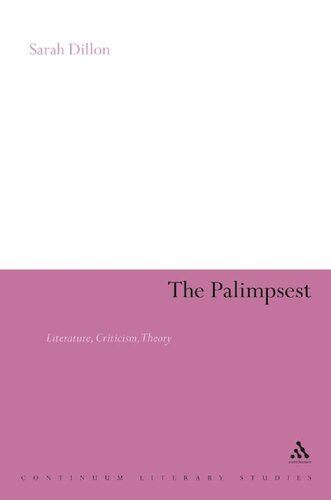

Most ebook files are in PDF format, so you can easily read them using various software such as Foxit Reader or directly on the Google Chrome browser.
Some ebook files are released by publishers in other formats such as .awz, .mobi, .epub, .fb2, etc. You may need to install specific software to read these formats on mobile/PC, such as Calibre.
Please read the tutorial at this link: https://ebookbell.com/faq
We offer FREE conversion to the popular formats you request; however, this may take some time. Therefore, right after payment, please email us, and we will try to provide the service as quickly as possible.
For some exceptional file formats or broken links (if any), please refrain from opening any disputes. Instead, email us first, and we will try to assist within a maximum of 6 hours.
EbookBell Team

0.0
0 reviewsDrawing together diverse literary, critical and theoretical texts in which the palimpsest has appeared since its inauguration by Thomas De Quincey in 1845, Palimpsest: Literature, Criticism, Theory provides the first ever genealogy of this metaphor. Sarah Dillon's original theorisation argues that the palimpsest has an involuted structure which illuminates and advances modern thought. While demonstrating how this structure refigures concepts such as history, subjectivity, temporality, metaphor, textuality and sexuality, Dillon returns repeatedly to the question of reading. This theorisation is interwoven with close readings of texts by D. H. Lawrence, Arthur Conan Doyle, Umberto Eco, Ian McEwan and H.D.
Clearly written, and negotiating a range of critical theories and modern literary texts, it provides a reference point and critical tool for future employment of the concept of 'palimpsestuousness', and makes a significant contribution to the debate surrounding the relationship between theoretical and critical writing on literature.